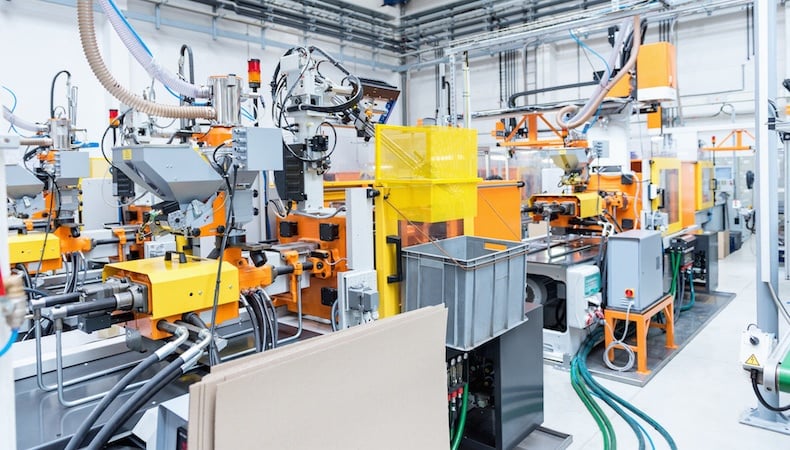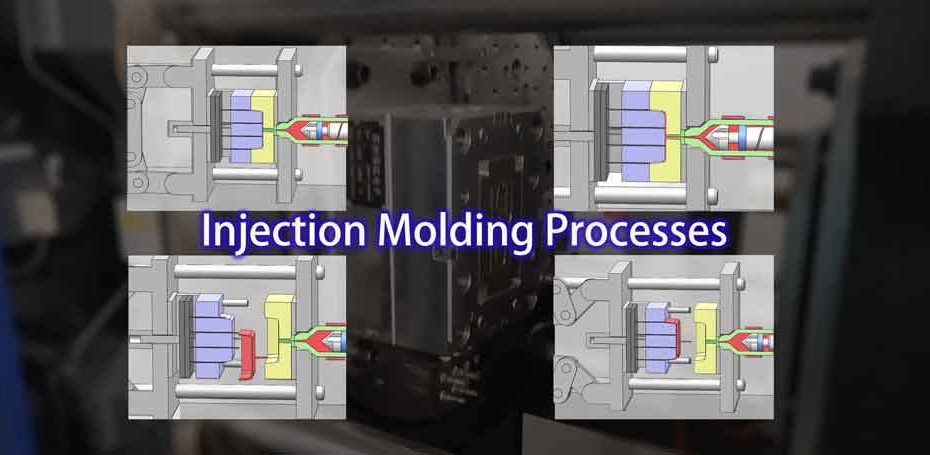The Role of Plastic Injection Molding in Producing Cost-Effective Industrial Components
The Role of Plastic Injection Molding in Producing Cost-Effective Industrial Components
Blog Article
The Future of Plastic Injection Molding: Patterns and Technologies to Enjoy
As the plastic shot molding sector develops, a number of vital trends are arising that guarantee to reshape its landscape. Automation and smart manufacturing strategies are set to improve performance, while the shift towards sustainable products reflects a growing ecological awareness. Moreover, improvements in 3D printing are paving the means for unprecedented layout flexibility. Nevertheless, these advancements additionally yield difficulties that call for careful consideration. Comprehending how these components will certainly interact and affect future practices is essential for stakeholders seeking to navigate this transformative duration effectively.
Automation and Smart Production
As the plastic injection molding sector progresses, automation and clever manufacturing are taking center phase, transforming production procedures - Plastic Injection Molding. The integration of innovative technologies such as robotics, IoT (Net of Things), and man-made intelligence is allowing suppliers to boost effectiveness, lower functional prices, and boost item top quality. Automated systems enhance operations, minimizing manual intervention and boosting throughput, which is essential in meeting the rising need for quick production cycles
Smart producing innovations facilitate real-time monitoring and data analysis, allowing companies to maximize equipment performance and anticipate maintenance needs. This aggressive technique not only decreases downtime yet also extends the lifespan of equipment. Additionally, using collective robotics, or cobots, boosts the adaptability of assembly line, making it possible for devices and workers to operate alongside safely and efficiently.
The fostering of automation in plastic injection molding is not simply a pattern however a strategic essential for companies aiming to continue to be affordable in a worldwide market. By using these modern technologies, suppliers can achieve greater precision, minimize waste, and adjust swiftly to changing customer demands, placing themselves for sustainable growth in a significantly computerized future.
Lasting Products and Practices
The push towards automation and smart manufacturing has paved the method for a higher emphasis on lasting products and practices within the plastic shot molding market. Business are progressively looking for environmentally friendly alternatives to typical petroleum-based plastics, leading to the adoption of recycled and bio-based materials. These lasting materials not only reduce environmental influence however likewise align with consumer demand for greener items.

Moreover, partnership between manufacturers, material suppliers, and environmental companies is promoting technology in the growth of sustainable materials that fulfill efficiency standards without compromising high quality. As regulations around plastic usage come to be more stringent, the market is positioned to adjust by accepting these lasting techniques, guaranteeing long-term stability and minimizing dependence on non-renewable sources. The assimilation of sustainability into plastic injection molding is not merely a trend; it is coming to be a vital component of corporate obligation and operational excellence.
Breakthroughs in 3D Printing
Recent improvements in 3D printing technology are significantly changing the landscape of plastic shot molding. The assimilation of additive manufacturing procedures permits the rapid prototyping of complicated geometries that were once tough or impossible to attain via standard approaches - Plastic Injection Molding. This capacity not only increases item development cycles yet additionally lowers material waste, straightening with the expanding need for sustainable production methods
Moreover, the appearance of crossbreed manufacturing strategies, which incorporate 3D printing and shot molding, offers suppliers the capability to create complex layouts while preserving the performance of mass manufacturing. This method allows the production of personalized components customized to particular customer requirements without compromising the rate and scalability that injection molding provides.
Furthermore, innovations in materials, such as high-performance polymers and composites particularly developed for browse around these guys 3D printing, are you can find out more boosting the useful capacities of published components. These products can hold up against better anxiety and show improved thermal homes, making them ideal for even more requiring applications.
As 3D printing remains to advance, its combination into plastic injection molding processes assures to boost productivity, decrease prices, and foster development in item style, positioning producers to much better meet the challenges of an open market.
Data Analytics and IoT Assimilation
Information analytics and the assimilation of the Web of Things (IoT) are reinventing plastic shot molding by providing manufacturers with unprecedented insights right into their operations. By leveraging real-time data collected from interconnected equipments and sensors, suppliers can check performance metrics, identify ineffectiveness, and optimize production procedures. This data-driven technique assists in predictive maintenance, reducing downtime and expanding devices life-span.
Moreover, IoT combination permits for boosted quality assurance. By continuously tracking variables such as cycle, temperature, and pressure times, manufacturers can swiftly discover discrepancies from established specifications and make modifications in genuine time. This not just improves product uniformity but additionally lowers waste and scrap prices.
The blend of data analytics and IoT innovations also empowers manufacturers to take on even more nimble production methods. With accessibility to thorough information analytics, companies can react to market demands with higher versatility, changing production routines and setups as needed. This adaptability is necessary in a swiftly changing manufacturing landscape.

Customization and Design Adaptability
Just how can personalization and style versatility improve the competitiveness of plastic shot molding? Modification permits producers to meet specific client demands, accommodating distinct measurements, shapes, and functionalities that common items might not fulfill.
Advancements in layout innovations, such as computer-aided style (CAD) and fast prototyping, additional boost this pattern. These devices enable designers to produce complex geometries and complex patterns, which can be flawlessly incorporated into the manufacturing process. As a result, suppliers can respond promptly to altering customer preferences and market needs.
Moreover, the implementation of modular tooling systems improves style adaptability, enabling quicker adjustments between different item designs without considerable downtime. This flexibility can lead to reduced lead times and lower manufacturing costs, making firms much more dexterous and affordable. Inevitably, welcoming customization and style versatility in plastic injection molding not just raises product offerings yet also reinforces market positioning in an ever-evolving landscape.
Conclusion
The future of plastic shot molding is defined by significant innovations in automation, sustainable practices, and cutting-edge products. The assimilation of IoT and information analytics will certainly enhance functional efficiency and predictive upkeep. The adoption of recycled and bio-based products, together with progression in 3D printing, will certainly promote sustainability within the market. Personalization through modular tooling and fast prototyping will certainly allow manufacturers to remain competitive and responsive to the dynamic demands of the marketplace.

The future of plastic shot molding is characterized by substantial advancements in automation, sustainable techniques, and cutting-edge materials.
Report this page